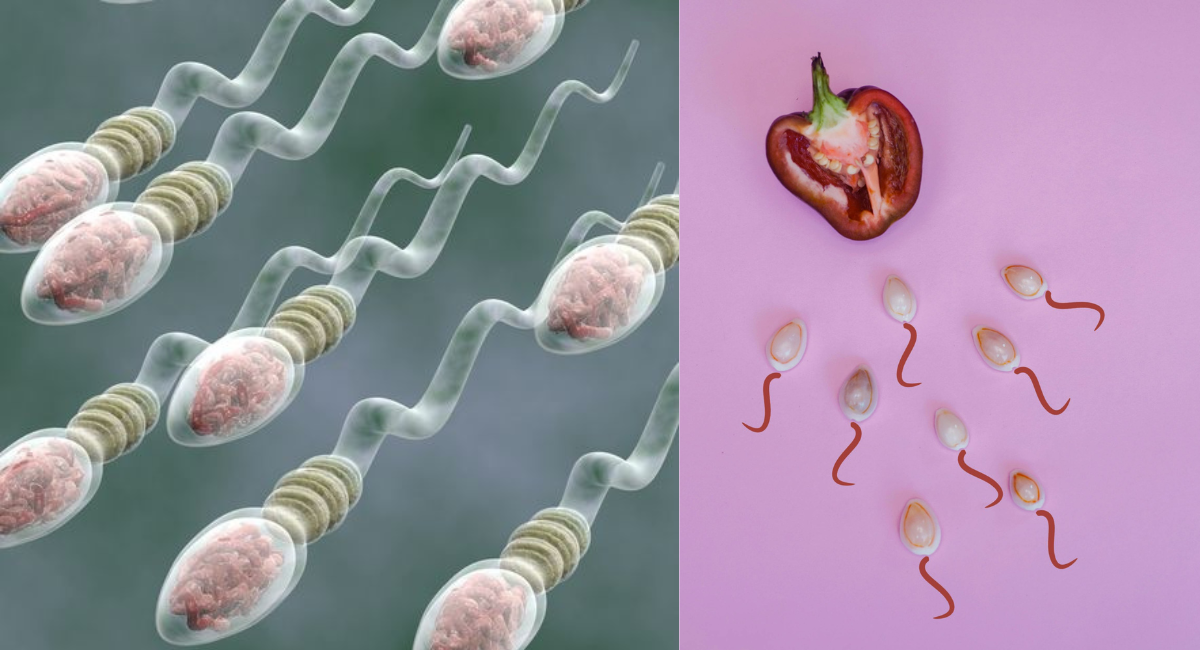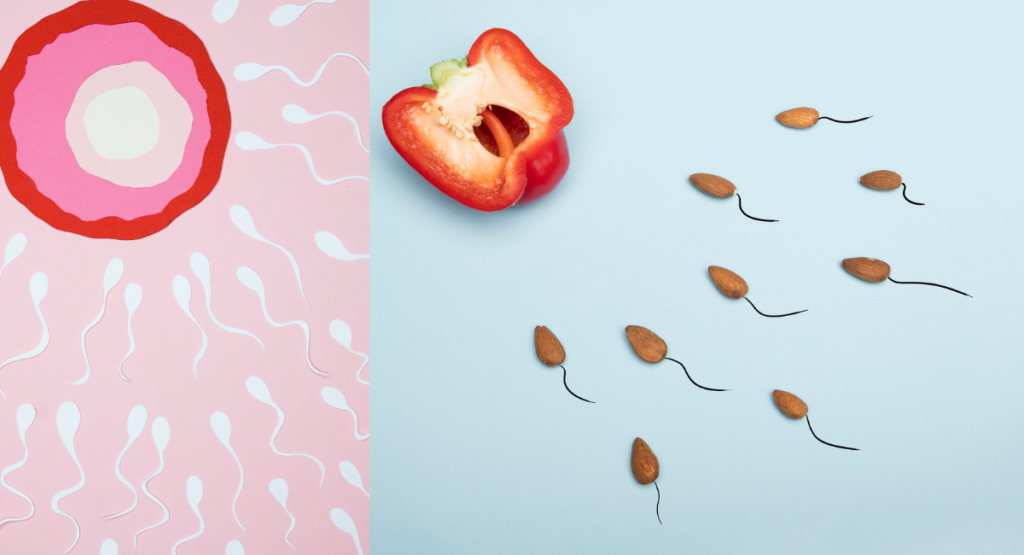Understanding Sperm: A Deep Dive into Male Fertility and Beyond
When it comes to human reproduction, sperm play a starring role. These tiny cells, invisible to the naked eye, hold the key to creating life. But there’s so much more to sperm than their basic function. From their intricate structure to the numbers needed for conception, and even some quirky terms like “sperm cramps,” this article will explore the fascinating world of sperm in a way that’s easy to understand and relatable. Whether you’re curious about fertility, biology, or just want to know what makes sperm thick, let’s dive in!
Sperm Diagram: Mapping the Tiny Hero of Reproduction
Picture this: a microscopic swimmer with a single mission—to reach and fertilize an egg. That’s sperm in a nutshell, but there’s more to it than meets the eye. A sperm diagram breaks it down into three main parts: the head, the midpiece, and the tail. Each part has a specific job, and together, they make sperm a highly specialized cell.
The head is the business end, carrying the genetic material—half of the DNA needed to create a new human. It’s capped with something called the acrosome, a little hat-like structure filled with enzymes that help the sperm penetrate the egg. The midpiece is the powerhouse, packed with mitochondria that generate energy for the journey. Finally, the tail (or flagellum) whips back and forth, propelling the sperm forward like a miniature motorboat. This elegant design is nature’s way of ensuring sperm can navigate the challenging path to conception.
Understanding this diagram isn’t just for biology buffs—it’s a window into how life begins. Next time you think of sperm, imagine this tiny, streamlined marvel, perfectly engineered for its purpose.
Normal Sperm Count: What’s the Magic Number?
When people talk about male fertility, one question often comes up: what’s a normal sperm count? Simply put, it’s the number of sperm present in a single milliliter of semen. According to the World Health Organization (WHO), a normal sperm count ranges from 15 million to over 200 million sperm per milliliter. That’s a lot of swimmers in a tiny drop!
But here’s the catch: it’s not just about the total count. Doctors also look at concentration, motility (how well they swim), and morphology (their shape). A healthy count doesn’t guarantee fertility if the sperm can’t move effectively or if too many are misshapen. On average, a man produces about 20 to 300 million sperm per day, but only a small fraction ever make it to the finish line during conception.
For men wondering about their reproductive health, a semen analysis can provide clarity. Lifestyle factors—like diet, exercise, and avoiding smoking—can boost that count, making it a number worth paying attention to.
Structure of Sperm: A Closer Look at Nature’s Design
The structure of sperm is a masterpiece of biological engineering. As we touched on earlier, sperm are divided into three key sections: the head, midpiece, and tail. But let’s zoom in a bit closer to appreciate what makes this cell so unique.
The head, roughly 5 micrometers long, is oval-shaped and contains tightly packed DNA. That acrosome we mentioned? It’s like a chemical battering ram, releasing enzymes to break through the egg’s outer layers. The midpiece, about 7-10 micrometers, is loaded with mitochondria—think of them as tiny fuel cells that keep the sperm energized for its marathon swim. The tail, stretching 50 micrometers or more, is a whip-like structure that lashes tirelessly to push the sperm through the female reproductive tract.
What’s amazing is how lightweight and efficient this structure is. Sperm are built to travel light, shedding excess baggage to focus on speed and precision. It’s a design that’s been perfected over millions of years of evolution, and it’s a testament to how even the smallest cells can have a big impact.
Normal Sperm Count to Get Pregnant: Does Quantity Matter?
If you’re trying to start a family, You might wonder: what’s the normal sperm count to get pregnant? While a healthy sperm count (15 million to 200 million per milliliter) is a good starting point, conception is a numbers game with a twist.
During ejaculation, a man releases anywhere from 2 to 5 milliliters of semen, containing millions of sperm. But here’s the reality: only one sperm fertilizes the egg. So why the huge numbers? It’s because the journey to the egg is brutal. Sperm face acidic environments, immune defenses, and a long swim—sometimes up to 15 centimeters—through the female reproductive system. Out of millions, only a few hundred might reach the egg, and just one (or occasionally more in rare cases) gets the job done.
For pregnancy to occur naturally, experts suggest a minimum of 4-5 million motile sperm per milliliter after accounting for losses along the way. However, quality often trumps quantity. Even men with lower counts can conceive if their sperm are healthy and mobile. Factors like timing (ovulation) and overall reproductive health play massive roles too. So, while a “normal” count helps, it’s not the whole story—teamwork between partners is what seals the deal.
Sperm Cramps Meaning: Decoding a Curious Phrase
Now, let’s tackle something a bit unexpected: Sperm cramps meaning. You might have heard this term thrown around casually, but what does it really mean? Spoiler alert: it’s not a medical diagnosis, but it could point to a couple of things depending on context.
For some, “sperm cramps” is a colloquial way of describing discomfort men might feel after prolonged sexual activity or arousal without ejaculation. This could be linked to tension in the pelvic muscles or a buildup of pressure in the reproductive system—sometimes called “blue balls.” Scientifically, it’s not the sperm themselves cramping (they’re far too tiny for that!), but rather the surrounding tissues reacting to physical or hormonal shifts.
In other cases, it might be a playful or exaggerated way to describe abdominal discomfort after ejaculation, possibly from muscle contractions during orgasm. There’s no official condition called “sperm cramps,” but the phrase captures a relatable human experience. If the discomfort persists or worsens, though, it’s worth checking with a doctor to rule out issues like infections or muscle strain. For most, it’s just a quirky way to describe a fleeting feeling.

Sperm Meaning: More Than Just a Cell
Finally, let’s explore the broader Sperm meaning. At its core, sperm is a male reproductive cell, derived from the Greek word “sperma,” meaning “seed.” It’s the counterpart to the female egg, and together, they kickstart the miracle of life. But sperm’s significance goes beyond biology—it’s tied to culture, identity, and even humor.
In scientific terms, sperm are haploid cells, meaning they carry half the genetic material of a human (23 chromosomes). When they fuse with an egg’s 23 chromosomes, you get the full 46 needed for a new person. That’s the technical side. But in everyday language, “sperm” can pop up in slang, jokes, or even debates about masculinity and fertility. It’s a word that’s both clinical and loaded with meaning, depending on who’s using it.
Beyond reproduction, sperm have inspired curiosity and research. Scientists study them to understand fertility, genetics, and even evolution. For the average person, though, sperm might just mean potential—a tiny seed of possibility that, under the right conditions, grows into something extraordinary.
Wrapping It All Up: The Big Picture of Sperm
Sperm might be small, but their story is anything but. From the detailed sperm diagram that reveals their clever design to a Normal sperm count that keeps fertility in check, these cells are a blend of science and wonder. The Structure of sperm showcases nature’s precision, while a normal sperm count to get pregnant reminds us that conception is a team effort with a dash of luck. Even quirky terms like Sperm cramps meaning add a human twist to the tale, and the broader Sperm meaning ties it all to life’s bigger questions.
Whether you’re here to learn about biology, boost your fertility knowledge, or just satisfy your curiosity, sperm offer a fascinating lens into how we’re all connected. They’re proof that even the tiniest things can carry immense potential. So, next time you hear about sperm, you’ll know there’s a whole world of detail—and a bit of humor—behind that little swimmer.
Finally, let’s explore the broader Sperm meaning. At its core, sperm is a male reproductive cell, derived from the Greek word “sperma,” meaning “seed.” It’s the counterpart to the female egg, and together, they kickstart the miracle of life. But sperm’s significance goes beyond biology—it’s tied to culture, identity, and even humor.
In scientific terms, sperm are haploid cells, meaning they carry half the genetic material of a human (23 chromosomes). When they fuse with an egg’s 23 chromosomes, you get the full 46 needed for a new person. That’s the technical side. But in everyday language, “sperm” can pop up in slang, jokes, or even debates about masculinity and fertility. It’s a word that’s both clinical and loaded with meaning, depending on who’s using it.
Beyond reproduction, sperm have inspired curiosity and research. Scientists study them to understand fertility, genetics, and even evolution. For the average person, though, sperm might just mean potential—a tiny seed of possibility that, under the right conditions, grows into something extraordinary.

